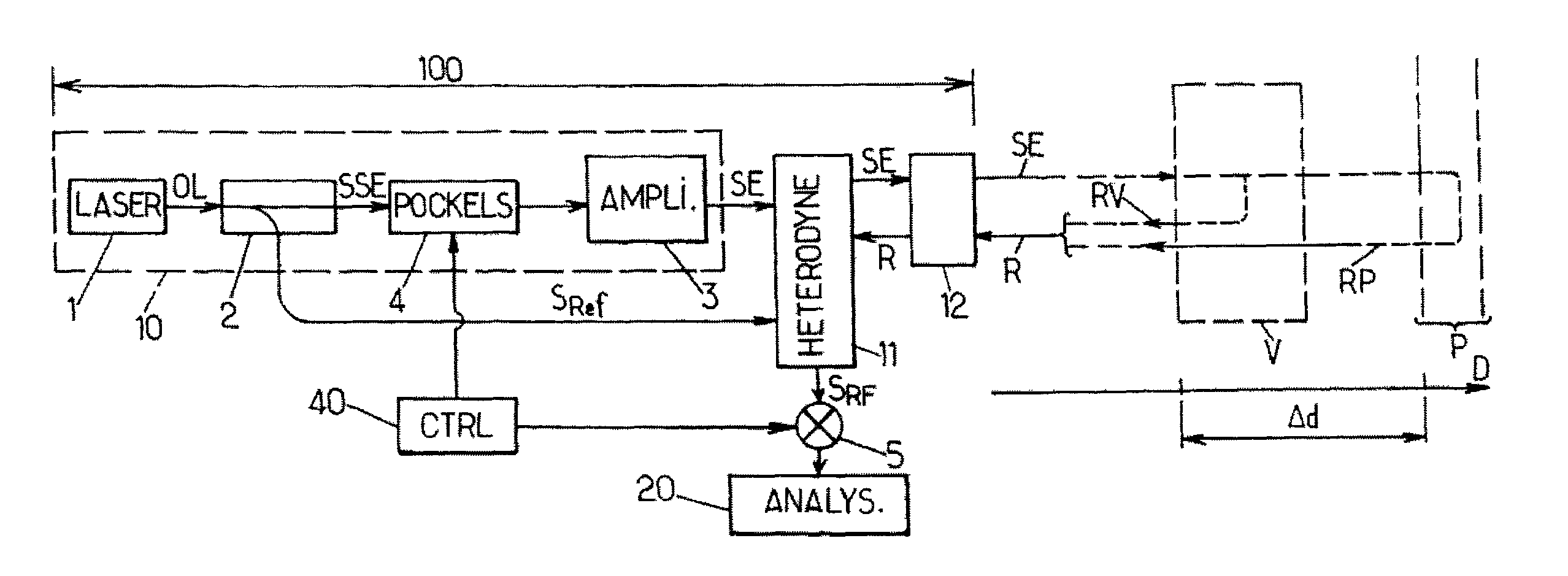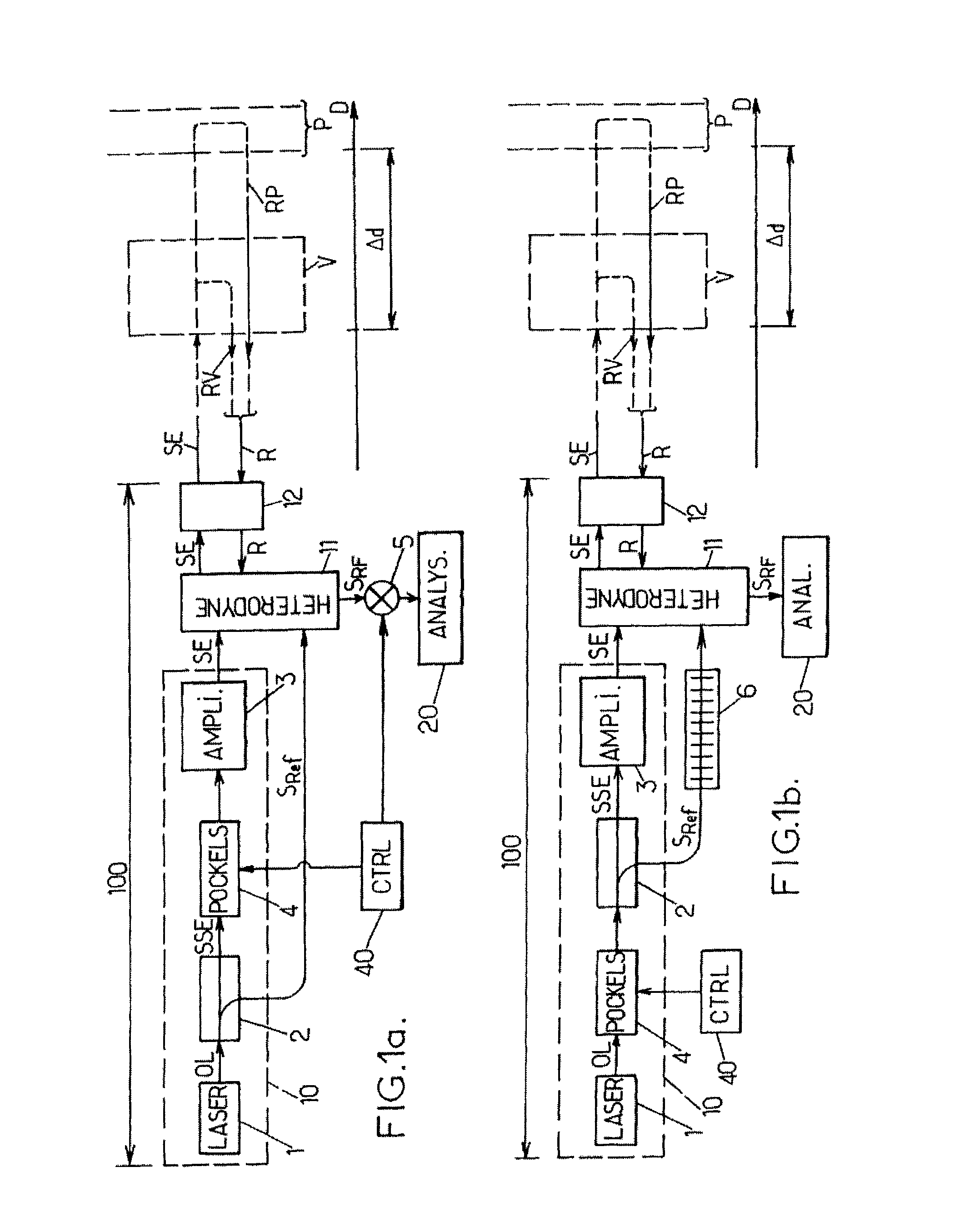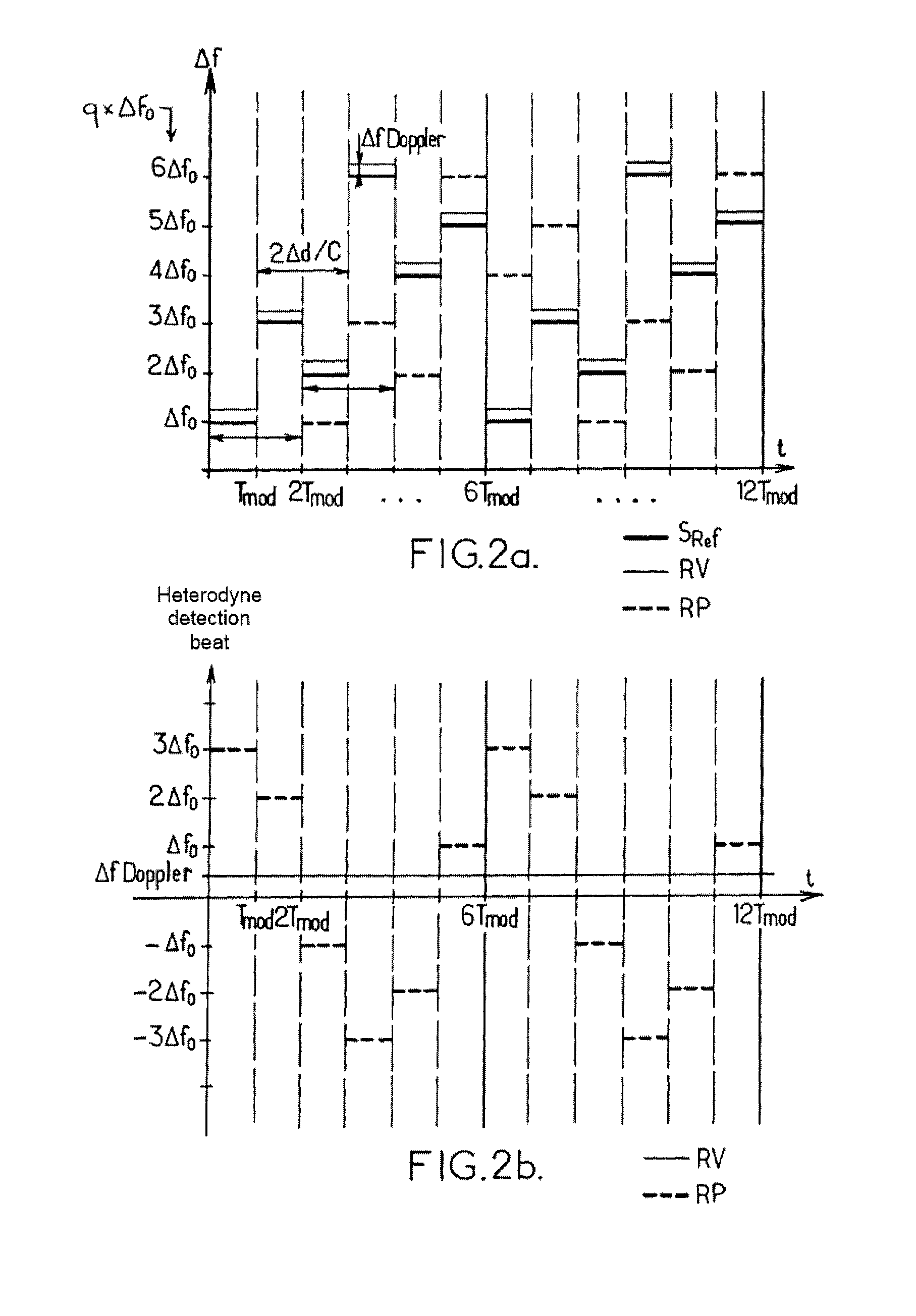Measurement of speed or vibration characteristics using a LIDAR device with heterodyne detection
a technology of heterodyne detection and measurement of speed or vibration characteristics, which is applied in the direction of liquid/fluent solid measurement, devices using optical means, reradiation, etc., can solve the problems of difficult movement, interfere with or prevent the detection of the wave portion, and is not suitable for use on board a vehicle or an aircraft. , to achieve the effect of only slightly modifying such devices
- Summary
- Abstract
- Description
- Claims
- Application Information
AI Technical Summary
Benefits of technology
Problems solved by technology
Method used
Image
Examples
Embodiment Construction
[0067]In FIGS. 1aand 1b, the same references denote identical elements or elements with identical functions. In addition, the following references denote the components indicated below, which are used in the same manner as in a known monostatic LIDAR device with heterodyne detection:[0068]100: the LIDAR device with heterodyne detection,[0069]1: a laser oscillator, adapted to produce an optical wave OL,[0070]2: an optical splitter, which is arranged to split the optical wave OL into an emission source signal SSE and a reference signal SRef,[0071]3: an optical amplifier, which is adapted to produce an emission signal SE from the emission source signal SSE,[0072]11: a mixing and detection unit,[0073]12: an optical head, adapted to transmit the emission signal SE in the direction of a target volume and to receive a backscattered signal R, and[0074]20: analysis means.
[0075]In addition, D denotes a pointing direction of the device 100, which is selected by the orientation of the optical h...
PUM
 Login to View More
Login to View More Abstract
Description
Claims
Application Information
 Login to View More
Login to View More - R&D
- Intellectual Property
- Life Sciences
- Materials
- Tech Scout
- Unparalleled Data Quality
- Higher Quality Content
- 60% Fewer Hallucinations
Browse by: Latest US Patents, China's latest patents, Technical Efficacy Thesaurus, Application Domain, Technology Topic, Popular Technical Reports.
© 2025 PatSnap. All rights reserved.Legal|Privacy policy|Modern Slavery Act Transparency Statement|Sitemap|About US| Contact US: help@patsnap.com



